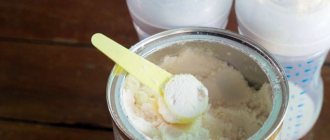In the modern rhythm of life, many mothers are concerned about the issue of storing breast milk, since very often a woman is forced to leave for her own business. If the baby is bottle-fed, then the parents do not have any problems with feeding the baby. But what if the newborn receives exclusively breast milk? Do not stop breastfeeding, especially since everyone knows about the benefits of breast milk. How and for how long can breast milk be stored after pumping? Today we will talk about this in this article.
How and in what to store expressed breast milk
In order for expressed milk to retain all its beneficial qualities and not spoil, you need to know under what conditions it should be stored. There are three storage options: at room temperature, in the refrigerator and in the freezer. However, another important point is its correct collection:
- Be sure to wash your hands with soap before pumping
- When using a breast pump, sterilize it
- Dry the container in which you are going to express breast milk thoroughly.
- Do not fill the milk storage container completely (as it will expand when freezing)
- Try to divide milk into portions: one serving - one feeding
- If you do not plan to feed your baby in the next few hours, it is better to immediately put the milk in the refrigerator
Is it possible and necessary to express breast milk?
For some reason, many mothers decide to buy a breast pump and use it to replace their baby. Either this is a fashion trend (someone has such a thing and I need it), or a tribute to a career, work, employment, because of which the unity of mother and baby does not occur. The best breast pump is the baby himself, who knows: how to take the breast correctly (you just suggest it to him, and he will figure it out on his own); who knows how much he needs (he will drink as much as he needs - 60-90 grams at a time), who looks into your eyes with love and affection after two months.
If this is not convincing, then here is what doctors say about pumping:
- this can disrupt lactation cycles (when breastfeeding a baby, the process itself takes 20-40 minutes, and the regularity is every 2-3 hours - as your baby needs);
- this can disrupt the lactation of milk itself (the child drinks as much as he needs, accordingly, milk is produced according to his needs, even during periods when a woman has less milk, just apply more often and everything will work out; when expressing, the body reproduces milk, which you simply then you throw it out because of its unsuitability, after 24 hours of storage in the refrigerator, while feeling sorry for yourself as a milking cow and sorry for your milk);
- this contributes to the baby’s early weaning (it’s much more convenient to get ready-made milk from a bottle than to try to get it yourself).
Here's what psychologists say:
- The connection between mother and baby is lost very early, which leads to emotional coldness of the baby.
He will grow up to be quite independent, maybe with some kind of dislike complex, but a completely normal person who, in response to your request “Bring me some water, please,” will most likely say: “Go get it yourself.” After all, breastfeeding is not just eating (no matter where or how), but it is, first of all, emotional contact with the mother, on which the child’s confidence and sense of well-being depend.
It is for this reason that maternity hospitals now practice visiting women in labor with a psychologist who talks about the psychological side of breastfeeding, and midwives who teach how to properly put a baby to the breast in order to avoid mistakes.
Pumping was widely practiced in Soviet times, with the goal that the woman would go to work sooner, and the child would not have attachments. Indeed, this is how a considerable generation of people grew up, working well, but pushing away their feelings and experiences.
Nowadays, when there is an opportunity to be close to the baby and enjoy the closeness of communication, to enjoy motherhood, there is no point in giving up this happiness. Just 1 year of absence from you in your career will not solve anything, but it will create a happy destiny for the baby.
But, nevertheless, there are reasons that often do not depend on our desires. It is then that you need to resort to a process such as pumping. At the same time, you need to consult with your baby’s pediatrician on this topic, listen to his recommendations (when, with what regularity, how, because he will be based specifically on your baby and his needs, and not the general instructions that are included in the box with the breast pump ), and, guided by them, proceed to this matter.
As for the concepts of “wrong breasts” and “little milk”, there is no such thing in nature. There are our attitudes and expectations that we have built up due to the advice and rumors of others, and they have become a reality, embodied by us.
This is what E. O. Komarovsky says about this
So, if there is no way out, and you need to express yourself, then the question arises: HOW? You can do it manually, or you can use a breast pump.
What should I store it in?
You can store expressed breast milk in glass or plastic bottles or containers. However, plastic bottles are more suitable for short-term storage: it is convenient to take it with you on a walk or to the clinic. Due to the private use of a brush for washing, microcracks appear on the inside, where organisms harmful to health can continue to function even after sterilization.
For long-term storage, special bags for storing breast milk are ideal. Today, the children's goods market offers a large selection of such containers.
It is important that the selected container does not contain bisphenol A, which is very dangerous to health.
Such bags are very convenient: they are sterile, hermetically sealed, do not take up much space, it is convenient to store expressed milk in them, and for freezing they are generally an irreplaceable thing.
To properly store breast milk, the container must be sterile, tightly closed, and it is advisable to sign the date and time of filling. If these conditions are met, harmful bacteria will not get into the milk, and it will be suitable for the baby for a long time.
How to store?
Let's talk about how long breast milk can be stored in the refrigerator and in a bottle.
There are different ways to store the mixture.
First, let's look at what not to do:
- Freeze the mixture again, as there will be no useful components left.
- Boil defrosted milk in various ways.
- Follow the rules of hygiene: before expressing, wash the container with soap and water.
- If the child did not drink all the liquid from the jar, then you have the right to use the mixture later, but it is better to still pour out the milk. During breastfeeding, bacteria can get into the milk, which can cause stomach problems and pain.
- Be sure to shake the bottle before giving it to your baby.
- Be careful as the mixture can spoil very quickly. If you have the opportunity, boil the milk before drinking.
- You can also express using a special device.
- Don't forget to sterilize the bottle before freezing the liquid. Do not fill the jar to the brim, as during freezing the bottle may crack and an unpleasant odor will appear, and unwanted microorganisms will penetrate inside.
- One serving is 150 grams. If after some time the girl still collects milk, this refers to the addition, that is, such milk must be stored in another place. In addition, it is better not to mix frozen milk with freshly expressed milk.
At home
First of all, let's look at how long breast milk can be stored in the refrigerator at home.
If you adhere to these rules, then milk will not lose its beneficial properties:
- Be sure to sterilize the container that will be refrigerated. To avoid using sour liquid, write down the date and time of pumping.
- You should not place the bottles in the doors; it is better to put them deep in the refrigerator, since the temperature there will be the same throughout the day.
- Shake the jar before use.
We found out how long you can store breast milk in the refrigerator after pumping.
Now we’ll tell you how to heat up the liquid if it was previously standing in the room:
- use the water bath method: place the jar in a pan of cool water, heat it up a little, shake the container so that the liquid reaches the temperature you need;
- heat with hot water: place the bottle under running water until the temperature becomes equal to body temperature;
- special equipment to ensure that the temperature becomes what the mother needs.
Note! Breast milk should not be heated or microwaved.
To preserve milk, we recommend following these instructions:
If you are going to freeze liquid, then a container or jar will not be the best solutions, it is advisable to buy special bags. The main advantages here are: sterility, small size, healthy product with all vitamins.
How to freeze correctly: the first step is to cool the liquid, then distribute the mixture into various containers with a small amount of food for the baby. The dosage should be such that the child can drink everything at once.
The resulting mixtures should be distributed to different places in the freezer. We remind you that the mixture in this state can be stored for no more than 6 months. If you put all the bags together, their shelf life will decrease, especially when opening the refrigerator.
Note! Do not refreeze the product, as you will harm the baby (the beneficial properties will be lost).
Now we need to talk about how to prepare the milk for use: after you take out the package, there is no need to rush to warm it up. First, it is better to put it in the refrigerator, and then start heating the liquid.
If you stick to these simple requirements, then you will have a baby formula for every occasion.
Not all mothers know how long breast milk can be stored at room temperature. The product is good for no more than 10 hours. If the temperature does not exceed +25°, then the product can be kept for 4-6 hours. More than 25 degrees - up to 3 hours. If you leave the product for a long time, then the germs inside may begin to multiply, which will subsequently harm the health of the baby.
On a walk
How long does expressed breast milk last if you decide to take it with you on a walk?
Some mothers may encounter such a problem as storing formula outside. To avoid difficulties, just buy a thermal bag or a special thermos for milk. This method is suitable for any occasion: both on vacation and while going to the store. At one time you can take with you several servings for your baby.
How long can breast milk be stored at room temperature?
Many studies have shown that the shelf life of milk depends on air temperature. If the temperature in the room is between 23-25 degrees, then breast milk remains suitable for feeding the baby for 4 hours.
At a temperature of 19-22 degrees Celsius, milk is stored twice as long - up to 8 hours.
If the temperature is below +15 degrees, or the milk is stored in a thermal bag, then the shelf life is up to 24 hours.
It is important to know that it is not allowed to store expressed milk in medical containers (for example, for collecting urine), as they may contain unsafe elements in the composition. Only food grade plastic can be used.
Shelf life of colostrum without refrigeration
This mammary gland secretion is produced by the mother in the first 3-4 days after the birth of the baby. It is a yellow sticky liquid, the main component of which is serum albumin.
Attention! Colostrum contains less lactose and fat compared to mature breast milk, which allows the newborn's digestive system to adjust to the new food.
At room temperature not exceeding 25 0C, infants' first food product is usually stored for about 6-8 hours.
Storing breast milk after expressing in the refrigerator
Breast milk can be stored in the refrigerator at 2-4 degrees for 7 days.
There are several recommendations on how to properly store milk in the refrigerator:
- As already mentioned, the storage container must be sterile and can be exposed to low temperatures
- It is not advisable to place containers in the refrigerator doors. The best place to store it is near the wall of the refrigerator. There the temperature is more stable.
- Shake the container well before feeding
To safely warm up cold milk, you can use a water bath, a stream of hot water, or special warmers.
It is not allowed to heat breast milk in the microwave, or pour it into a pan and heat it on gas. This can lead to overheating and destruction of useful elements.
Freezing
Is it possible to freeze colostrum? Yes. This process allows the product to be stored for a whole year. A special chamber with a no-frost function is not suitable for this procedure, since the milk composition may melt. This leads to a reduction in shelf life.
To prevent a decrease in the concentration of substances that affect the immune system, it is important to adhere to the following rules:
Hardware method. If a woman has resorted to freezing, she will need a colostrum defroster in the future. It is necessary for the preservation of immune proteins. There are mothers who do this using a microwave. To do this, choose the minimum time and low power so as not to overheat the product unnecessarily.
A water bath for defrosting colostrum is done in a simple way. Pour water no more than 50 degrees into a large saucepan, lower the container with colostrum, and cover with a lid. The milk composition will be defrosted for 10–15 minutes, then it needs to be heated to 38 degrees and poured into a feeding bottle.
Plastic bags for colostrum are chosen for storing the product in the refrigerator and freezer. They are lightweight and airtight, do not require special preparation before use, and the packaging includes a measuring scale to indicate the date and time. This helps preserve colostrum according to all the rules and requirements for subsequent use.
Due to life circumstances, the mother has to feed the baby with preserved colostrum. A product that is first frozen and then heated is suitable for feeding a newborn. Despite long-term storage, the composition retains nutrients and valuable substances necessary for the normal development and growth of a newborn.
If you find an error, please select a piece of text and press Ctrl+Enter.
Source
Storing breast milk in the freezer
Frozen breast milk can be stored for up to 12 months: in single-chamber refrigerators, where the freezer temperature is 4 degrees and below, expressed milk is stored for 3 to 6 months, in double-chamber refrigerators - up to 12 months (temperature - 17 degrees and below).
As mentioned above, it is better to store breast milk in the freezer in special bags. They are compact, safe and easy to use.
To ensure that milk remains as healthy as possible, it is recommended to follow some rules:
- It is best to use frozen milk within 3 months, since with a longer storage period the beneficial substances may be destroyed
- Before freezing the milk, place it in the refrigerator for a couple of hours.
- You cannot refreeze milk after defrosting.
- Be sure to write down your pumping date.
- Dose servings: one packet = one feeding
It is better to defrost milk in the refrigerator and then heat it in the usual way (in a water bath or under a tap). If it is not possible to wait for natural defrosting, then you can put the container in a mug with warm water. Thawed breast milk can be stored in the refrigerator for no more than a day or at room temperature for 1-2 hours.
Sometimes, after defrosting, breast milk may change slightly. So, if you notice flakes, but after shaking the liquid becomes homogeneous again, then the milk can be used for feeding. This is a normal process. But if there is an unpleasant smell and a sour taste, the breast milk has most likely spoiled. Do not give it to your baby under any circumstances.
Of course, there may be different reasons why you need to express and store breast milk. It is important to follow all the conditions correctly and not ignore the recommendations, because the baby’s health is the most important thing.
Is there enough milk?
Control weighing will help you determine whether your baby is getting enough to eat. During the first month, the child should add at least 600 g to his initial weight. From 2 to 6 months, the baby should gain 700-800 g monthly. After six months, weight gain is no longer so intense - the baby should gain about 400 g every month.
When feeding, pediatricians advise calculating the required amount of milk per day according to the following principle: up to 1.5 months, a child should eat a volume of milk equal to one fifth of his weight, and after 1.5 to 5 months - one sixth of his weight.
The fact that the baby is full is evidenced by his calm mood after feeding, certain intervals between meals, and normal stool. If your child has problems with bowel movements, consult your pediatrician. Sometimes children who are fully breastfed do not have a bowel movement every day. In the hot season, when the air in the room rises above +22 °C, it is recommended to supplement the baby with water.
If for some reason you cannot breastfeed your baby, do not rush and switch to artificial feeding with adapted milk formulas. Breast milk is the best food for a baby. Therefore, try to maintain lactation and provide the baby with mother’s milk. Follow the rules for expressing and storing milk so that it does not lose its beneficial properties, and also bottle-feed your baby correctly.











